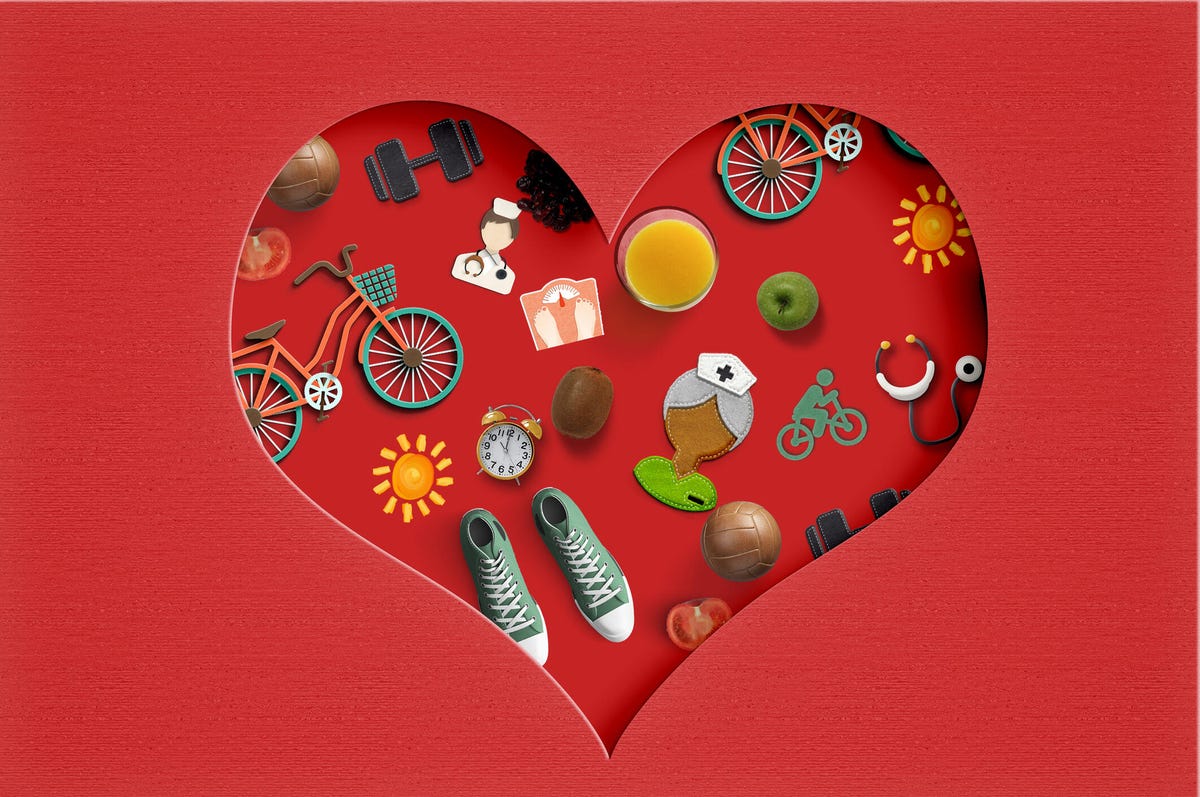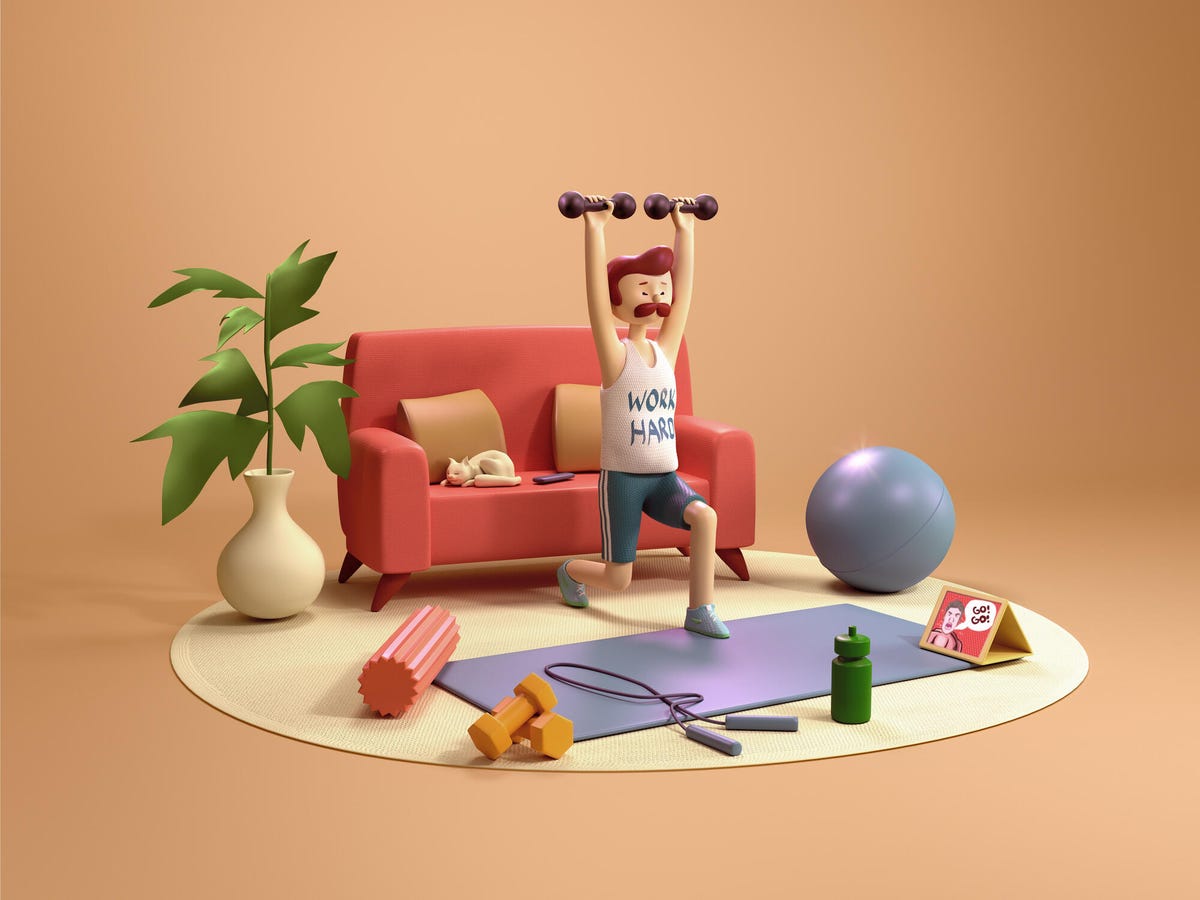More than half of US adults don’t know that heart disease is the leading cause of death, according to the American Heart Association. That’s concerning news because many of those deaths are preventable.
Heart disease, or cardiovascular disease, is a wide term for a series of health problems that interferes with the way the heart functions. Some causes of heart disease are genetic, but most develop over time. The most common kind of heart disease in the US is coronary artery disease, which is where plaque builds up in the arteries and blocks blood flow.
People may prevent this type of heart disease or reduce their risk of developing it even if they have a genetic predisposition, like high cholesterol that runs in the family. But many of our daily habits — not eating enough healthy foods, sitting too much and not sleeping enough — all make up what Dr. Andrew Freeman, a cardiologist at National Jewish Health in Denver, calls the “American curse.”
“Those are the exact recipes for early death and disabilities,” Freeman said, adding that much of the Western world is afflicted by the same “curse.”
Here’s what to know about the symptoms of heart disease and the common health concerns that can run hand in hand with it, as well as cardiologist-endorsed tips to improve your heart health in ways that you’ll actually enjoy.

What are the symptoms of heart disease?
Your symptoms will depend on what’s going on with your heart (if you have any symptoms at all). According to the Cleveland Clinic, some of the early signs of heart disease include chest pain, shortness of breath, leg swelling, fatigue and dizziness.
Most people with heart disease have coronary artery disease, which most commonly causes chest pain (angina). If you haven’t already had your chest pain diagnosed, and the pain doesn’t stop when you quit moving, you could be having a heart attack and should call 911. Acting quickly greatly improves your chances of surviving a heart attack.
In some cases, someone’s first clue that they have heart disease is experiencing a heart attack. Symptoms of a heart attack, according to the US Centers for Disease Control and Prevention, include chest pain or discomfort, weakness or light-headedness, nausea, cold sweating, pain in the shoulder and shortness of breath. Women may be more likely to experience less obvious symptoms during a heart attack, like pain in the jaw or back, so don’t dismiss your symptoms if you think there’s a possibility of heart attack.
Because the symptoms of heart disease vary so much and may not be present at all, the best course of action is to focus on prevention, get regular screenings and talk with a doctor immediately about any concerns.
What to know if you have high blood pressure
About half of US adults have high blood pressure (hypertension). This matters in a conversation about heart disease because hypertension is a risk factor, as it can damage your blood vessels.
The good news, according to Dr. Jonathan Vafai, a cardiologist at Delray Medical Center, is that high blood pressure can be managed or reversed. And many of the things that make your heart healthier can also help control your blood pressure. In some cases (and with explicit permission from a doctor who’s examined your heart health), you may even remove your need for medication.
“My favorite thing to do is stop people’s blood pressure medicines when appropriate,” Vafai said.
What about high cholesterol?
The plaque that builds up in your arteries is made of cholesterol (and other substances), which is why doctors recommend keeping tabs on your cholesterol to keep it in the healthy range. While the general understanding of cholesterol is complicated, doctors do know that too much “bad” cholesterol can cause coronary artery disease and problems with your blood vessels and heart.
For certain patients who are middle-aged and have a risk factor for heart disease (high cholesterol or diabetes, for example, or a family history of heart disease), Vafai said he recommends a calcium score scan or other screening.
This is a series of X-rays that look for plaque that has calcium, so it’s a non-invasive way to check for risk before symptoms of disease present.
High cholesterol is similar to other chronic (often symptomless) illnesses that run hand in hand with each other and affect quality of life. But while the health conditions themselves may seem complicated, your risk of getting them in the first place can be mitigated by the same small changes to your daily routine and improvements to your overall well-being.

1. Eat more plants and whole foods
To reduce your risk of heart disease, Freeman recommends a diet that’s primarily plant-based, lower in fat and full of “whole foods.” Whole foods don’t need to be fancy — quite the opposite, actually. You can think of whole foods as “ingredient” foods — fruits, vegetables, beans, meat, rice, bread, etc. (And no, it doesn’t mean you can’t season them or they have to be boring — the point is to get the most out of the food source itself and leave out things like added preservatives or sugars.)
One way to start incorporating more nutritious foods into your diet is to focus on adding color to your plate.
2. Be wary of meaty or restrictive diets
High protein diets and the more extreme “lion diets” have had their moment on social media because some people have attributed relief from chronic pain or health conditions to eliminating things from their plates, leaving a meat-centered approach to eating. But the experts we spoke with advised proceeding with caution, if only because your protein choices may come with other health risks, such as eating too much red meat or processed meats, for example.
There’s also the keto diet, which research has supported for weight loss. It could be a healthy choice for some people — but it won’t be for everyone.
“When you cut out ‘carbage,'” Freeman said, referring to carbs people may eat in excess, “people lose weight.”
“But that doesn’t necessarily mean they’re healthier,” he added.

3. Move your body (it doesn’t matter how)
Sitting too much is bad for your health. But you’d be surprised by how little effort you need to put into physical activity to start reaping the heart health benefits.
“I’d encourage people to do whatever they can,” Vafai said, adding that he’s seen improvements in people’s health after they got a dog to walk. Just find some activity each day to get your body moving.
How do you know when you’ve achieved a good bout of exercise? Freeman recommends trying to get to the point where it’s “hard to talk.”
Here’s more info on how to get exercise when you don’t feel like it and how to get a “movement” snack.
4. Be mindful of what you drink and smoke
By now, you probably know smoking isn’t good for your health and has been linked to heart disease. But other drugs and substances, including alcohol and weed, may also have an impact, according to Freeman.
Water is the obvious choice for heart-healthiest beverage, but unsweetened teas and coffee are good choices too, Freeman said. In addition to the high sugar content of regular soda, reconsider before reaching for a diet soda, as diet soda can affect insulin, he said.
5. Learn from the ‘blue zone’
The hype is real. Freeman recommends taking notes from people who live in a “blue zone” (in the US, that’s Loma Linda, California). These are areas where people tend to live longer lives, with their communities, nutrition, activity and sleep patterns all potentially contributing to their longevity.

6. De-stress and connect
We are in a “loneliness epidemic” for a reason. Experts know that loneliness and social isolation are linked to poor health outcomes — including heart disease and early death — but pinning down an exact mechanism is hard. Stress hormones and the lifestyle effects of having fewer relationships may play a role.
The cultural phenomena of suffering social connections, in particular, is one factor in heart disease, according to Freeman. While there’s no quick fix for something so widespread and integrated into our culture, Freeman recommends taking up an activity like meditation or going for a walk in the woods.
For more, here are some strategies for feeling less lonely and how to manage daily stress.

